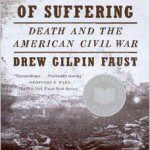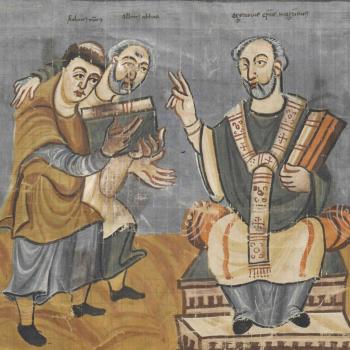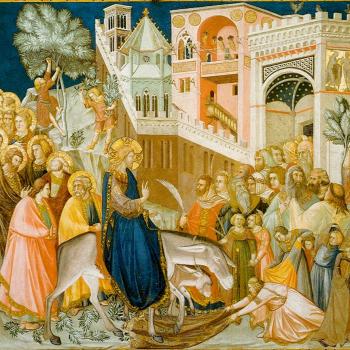Imagine American cities under siege by extreme Right-wing movements and paramilitary groups calling for armed violence, and actually attacking Jews and other minorities in the streets. You might think that such horrors would be hard to conceal, and the resulting soul-searching would give abundant material to later historians. But here is a mystery. The situation I am describing actually happened in the late 1930s and early 1940s, on a national scale, and the crisis lasted for some years before it was resolved. Yet in contrast to other incidents of ethnic violence – such as lynching – this particular wave of violence and extremist agitation features remarkably little in the media at the time, and in consequence it has received little coverage in subsequent decades. Understanding this silence gives a powerful and quite surprising insight into American religious politics, and specifically the religious influence on the workings of the mass media.
From the late 1930s, extremist movements of various kinds were very active in US cities. Communists boomed on the Left, while various ethnic movements appealed on the Right. German Rightists could join the pro-Nazi Bund, and Italian Fascism exercised an enormous appeal to people of that national origin. Many Irish Catholics followed the extremist anti-Jewish and anti-Communist rhetoric of the radio priest, Father Charles Coughlin. By 1938, the most extreme of these Irish activists had formed into the powerful and widespread Christian Front, which looked to the militaristic anti-Communism of Spain’s General Franco as a model. (Other Irish joined the Bund, which was far less German in composition than we might assume).
From 1939, all these movements became deeply involved in attempts to prevent US involvement in war with Hitler and the Axis.
As Theodore Irwin wrote in Inside the Christian Front (1940)
In New York, where it reached the most advanced stage, the new anti-Semitism has been a domestic storm-troop mob running amuck, spewing racial hatred, fomenting violence, staging street scenes never before witnessed in the city’s history. Composed chiefly of admirers of Charles E. Coughlin and sundry hoodlums, crackpots, misguided patriots, and Bundsters, the Christian Front and its shenanigans have taken on startling resemblances to early Naziism.
At its fountainhead, New Yorkers for more than a year have been subjected each week to an average of forty or fifty turbulent and vituperative Christian Front street meetings, at which crowds have been exhorted to liquidate the Jews in America. Bands of rowdies have roamed subways and streets insulting and assaulting Semitic-appearing men and women; abusive stickers have been slapped on widows of Jewish shops; a “Christian Index” has been compiled for an organized boycott; and brawls have ended in close to 250 arrests and 120 convictions. Men were recruited for a private army. Unfriendly radio stations and sponsoring Jewish merchants were raucously picketed. Affection for Hitler and his policies was outspoken. Christian Front propaganda penetrated even the public schools, and several Jewish children were severely beaten by small-fry Streichers.
By way of background, Irwin was the author of the once-famous 1935 novel Strange Passage, about “undesirable” illegal immigrants being transported across the US by a “Deportation Special” train, to be shipped back to their European homelands. This is apparently the first use of that particular theme in English language fiction, and it is timely stuff.
Street violence against Jews was particularly serious in Boston, where it persisted long after the outbreak of war, and some of the worst violence occurred in 1943. Philadelphia was another storm center, but so in their different ways were Detroit, Baltimore, Cleveland, Pittsburgh, Los Angeles, and all the major urban areas. Across the nation, Christian Front activists drilled, sought out weapons, and organized under the cover of their rifle clubs.
As to what members heard from the leaders of this would-be “private army,” journalist Arthur Derounian reported a meeting he had infiltrated of a Front-allied group at a New York “sporting club.” The militants reportedly mapped “every arsenal, subway station, power house, police and gasoline station, public building” in preparation for a rising. The club leader dreamed of the day of action: “I’d like to be able to pick up the paper someday and read ‘Grand Central Station Bombed,’ ‘The White House Blown to Bits,’ or ‘Queen Mary Sunk at her Dock’. . . . Terror! Terror! Terror! That is our watchword from now on.” Fortunately, it all remained a fantasy – but it still scared the FBI enough to arrest the Christian Front leadership in January 1940, on charges of planning just such a rising. (Let me make clear, I am not necessarily claiming that the Christian Front was ever close to an actual armed outbreak, but their rhetoric was terrifying).
Besides the egregious violence, Rightists in the 1939-41 period distributed thousands of anti-war leaflets and handbills by throwing them from high buildings, or even from low flying aircraft. The object lesson for the readers, of course, was how easy it would be for enemy forces to reach the cities with actual bombs rather than leaflets, so they should think very carefully before risking entry into war. All told, it would have been impossible for a city dweller in that era not to have had some encounter with the extremism bubbling up on the streets.
I cannot write about this in more detail here (because my knowledge is strictly limited), but I just note some intriguing ongoing work by Fr. Charles Gallagher on German intelligence’s recruitment of Boston’s Christian Front militants in the 1939-41 period. There is an excellent account here. I will follow this research with huge interest!
At this moment, even historically well-informed readers might find themselves startled by these observations. Dozens of fascist and anti-Semitic street meetings every week? “Kill the Jews” slogans? The Nazis sponsoring terrorism and hate movements on US soil? Why don’t we hear more about this? Well, some historians certainly have covered the phenomenon, and Stephen Norwood has an excellent Boston-focused article entitled “Marauding Youth and the Christian Front” (American Jewish History, 2003: do read it!). Other scholars have described different local communities, and the Philadelphia story was the focus of my own 1997 book Hoods and Shirts. But these events really have not loomed large in public consciousness, amazingly so given that, as Norwood says, “The pervasive anti-Jewish violence in Boston and New York during World War II suggests that anti-Semitism in the United States, at least in some locales, was much more deeply entrenched than most scholars have acknowledged.” That is an appalling conclusion.
So how do we explain the silence? The crucial factor was that the main perpetrators were Irish, Catholic, and looked as their leader to a Roman Catholic priest, Father Coughlin. Now, the Catholic hierarchy was deeply divided over Coughlin, and a good number of bishops viewed him as a loathsome insect, whose views they detested. However, the church’s traditions were very powerfully directed against any public attacks that might be construed as anti-Catholic, and they rallied to prevent negative coverage. And they were immensely well equipped to do so.
As George Seldes wrote in 1938, the Catholic church was “one of the most important forces in American life, and the only one about which secrecy is generally maintained, no newspaper being brave enough to discuss it, although all fear it and believe that the problem should be dragged into the open and made publicly known”. For the media, the consequences of non-compliance could be painful, and Seldes claimed that “To criticize the Catholic church is to invite a boycott, the withdrawal of advertising, loss in circulation and in revenue.” That censorship extended to international affairs, and woe betide the US urban newspaper that criticized General Franco, or even – God forbid – labeled him a Fascist.
In consequence, you can look carefully through all the newspapers of the time – and each major city had several at this time – and find strikingly little about the street violence, and the racist paramilitary mobs. When violence is discussed, it is virtually never attributed to the true culprits.
Look for instance at Philadelphia, where J. David Stern owned the Philadelphia Record, and ran it in the interests of progressive liberalism and the New Deal. Throughout the 1930s, the Record was the only paper in the city and sometimes the state that would publish stories seen as too difficult by other proprietors. He actually said bad things about General Franco (and it took a year for the Record‘s circulation to recover). But even Stern found the Catholic church too difficult an enemy to challenge.
Treatment of Catholic anti-Semitism was complicated by the structure of the Philadelphia press, in which both the major chains were dominated by Jewish magnates, respectively Moe Annenberg of the Inquirer and Stern of the Record. While both were sensitive to the growth of anti-Semitic activism, neither publisher could risk charges that their papers’ editorial views reflected the interests of a Jewish media conspiracy or cartel. In this context, any confrontation with the Catholic church would be uniquely perilous.
At the height of anti-Semitic agitation and violence by Irish Catholic Coughlin supporters in 1939, even the Record reported and denounced the incidents as fully as it dared, though normally without noting the religious or ethnic identity of the culprits, who are generally characterized as “Nazis” or “Bund supporters.” They are rarely acknowledged as Irish or Catholic. The only exceptions came when some local “Nazi” leader got himself arrested in a fracas, so that his name could finally appear in print, and it was Gallagher or Moran rather than Schmidt.
In Boston, out-of-control street violence against Jews raged until in 1943 the leftist New York paper PM addressed the “organized campaign of terrorism” and suggested, successfully, that the area’s Catholic priests should preach for peace. They did so, and the attacks subsided. Hitherto, the Boston press had basically left the whole matter uncovered, for fear of inviting boycotts from the immensely powerful Catholic Archdiocese. (The Christian Science Monitor also played an honorable role in this affair).
For a remarkable insight into the era, go to youtube and watch the short 1945 film, The House I Live In, a plea for tolerance using the person who was then the coolest of all urban idols, Frank Sinatra. In one scene, Sinatra stops a young street gang beating up another boy, and teaches them lessons in tolerance as the core of the American Way. If your dad was wounded at the front, he asks, wouldn’t you want him to have the blood he needed, from a person of whatever religion? Only a Nazi thinks different. The film does not explicitly focus on anti-Semitism, but obviously that is its whole point. Sinatra’s Italian Catholic background gave him unique credibility to an urban audience.
I should add that the Catholic Church was not the only culprit in this silence. In cities like New York and Boston, the New Deal rested on an alliance of Catholics and Jews, and public tensions between the two key Democratic Party factions had to be minimized. Any news stories of Catholic-Jewish violence would be a propaganda gift to the Germans.
So without newspapers or news media coverage, what is the historian to do? Obviously, part of the answer lies in unearthing confidential intelligence files, as Fr. Charles Gallagher is now doing. But there are other paths of entry.
The gap can also be remedied by oral history, but the whole crisis is actually covered in remarkable detail by several fine novels, which give a wonderful sense of the era. Arthur Miller covers the Christian Front under a pseudonym in his 1945 novel Focus, and Norman Mailer touches on the group’s mob violence in The Naked and the Dead (1948). Harry Sylvester’s 1947 novel Moon Gaffney likewise exposes the anti-Semitic and Coughlinite leanings of some New York Catholic clergy. One of the best sources is Lewis Browne’s 1943 novel See What I Mean, a detailed account of life in the Los Angeles far Right subculture of the era.
So the sources are there, but they require research skills quite different from more “mainstream” history, where we can rely on the news media. The whole sad story is a powerful lesson in the means by which we can know history, and the constraints and prejudices that can prevent us ever knowing the full story.
In historical terms, no news is emphatically not good news.
Next time, I’ll talk about the use of “Christian” language by extremist groups like the Christian Front, and how it (indirectly) shaped out modern political vocabulary

















